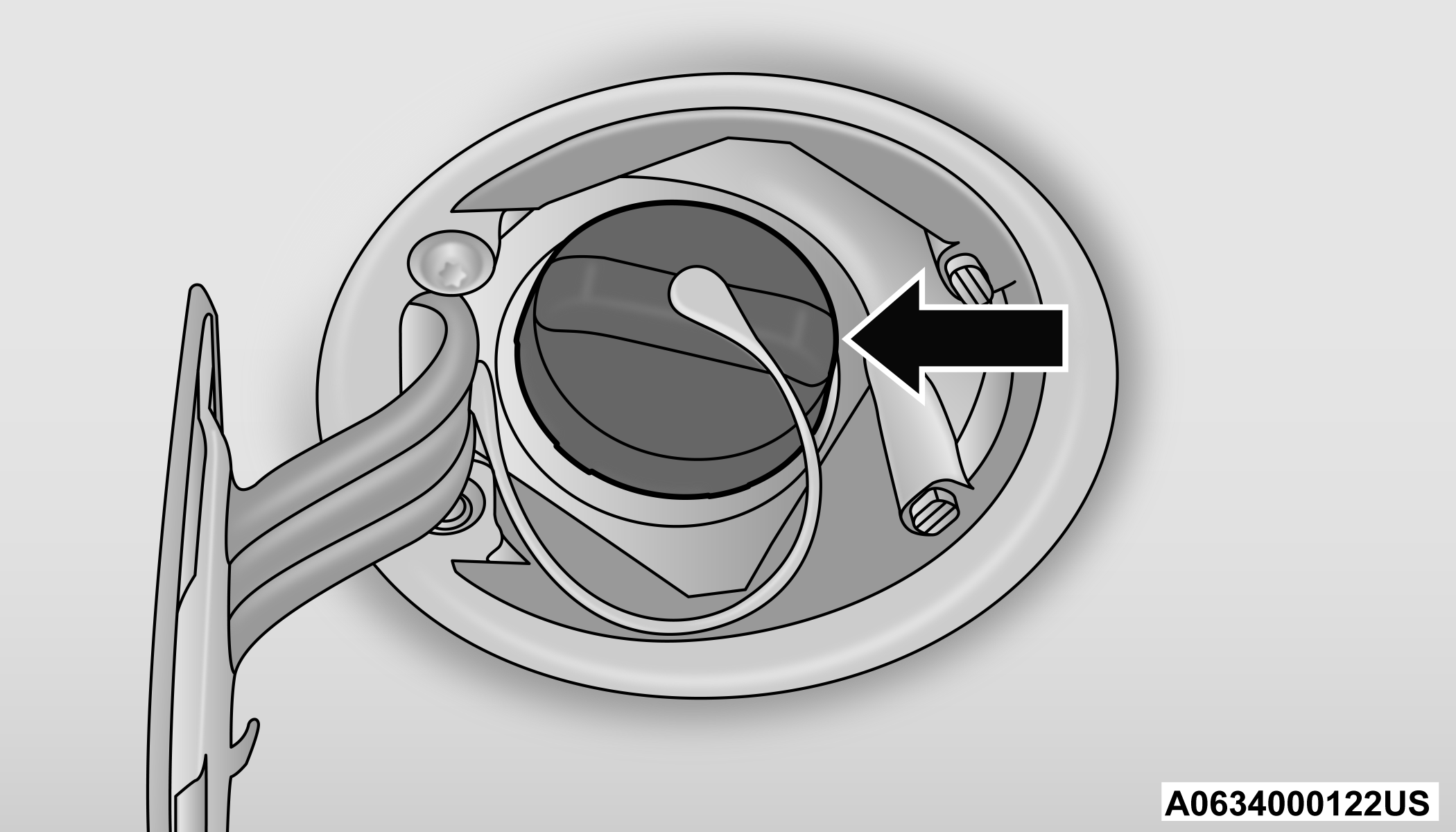The fuel filler cap (gas cap) is located behind the fuel filler door, on the left side of the vehicle. Open the fuel door and remove the fuel filler cap by turning it counter-clockwise.

Fuel Filler Cap
-
Fully insert the gasoline nozzle into the filler pipe.
-
Fill the vehicle with fuel.
-
Remove gasoline nozzle, reinstall fuel cap and close fuel filler door.
-
When removing the fuel filler cap, lay the cap tether in the hook, located on the fuel filler door.
-
When the fuel nozzle “clicks” or shuts off, the fuel tank is full.
-
Tighten the gas cap until you hear a “clicking” sound. This is an indication that the gas cap is tightened properly. The MIL in the instrument cluster may turn on if the gas cap is not secured properly. Make sure that the gas cap is tightened each time the vehicle is refueled.
-
Never have any smoking materials lit in or near the vehicle when the gas cap is removed or the tank is being filled.
-
Never add fuel to the vehicle when the engine is running.
-
A fire may result if gasoline is pumped into a portable container that is inside of a vehicle. You could be burned. Always place gas containers on the ground while filling.
-
Damage to the fuel system or emissions control system could result from using an improper fuel tank filler tube cap.
-
A poorly fitting fuel filler cap could let impurities into the fuel system.
-
A poorly fitting fuel filler cap may cause the Malfunction Indicator Light (MIL) to turn on.
-
To avoid fuel spillage and overfilling, do not “top off” the fuel tank after filling. When the fuel nozzle “clicks” or shuts off, the fuel tank is full.
Always place container on the ground before filling.
Keep the pump nozzle in contact with the container when you are filling it.
Use only approved containers for flammable liquid.
Do not leave container unattended while filling.
A static electric charge could cause a spark and fire hazard.